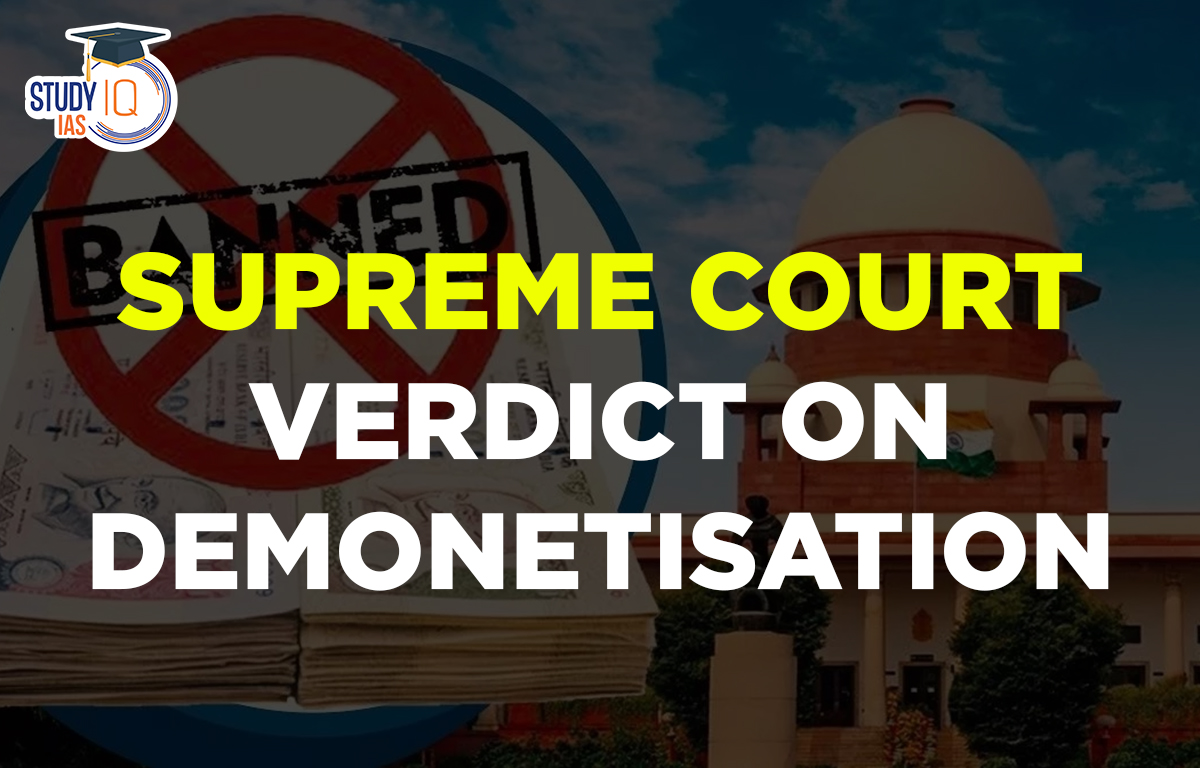Table of Contents
Context: A Constitution Bench of the Supreme Court has upheld the Union Government’s 2016 decision to demonetise currency notes of Rs 500 and Rs 1,000 by a 4:1 majority.
Supreme Court Verdict on Demonetisation Background

Why was Demonetisation Challenged?
Section 26(2) of Reserve Bank of India Act allows central govt. to declare any series of bank notes of any denomination illegal tender after a recommendation from central board of RBI.
- Section 26(2) of RBI Act, 1934: The Union Government has claimed that it has the power to demonetise currency under Section 26 (2) of the RBI Act.
- The petitioners argued that the provision allows only a specified series of currency to be demonetised, while the 2016 government notification demonetised all series of Rs 500 and Rs 1000 currency notes.
- Due process not followed: Petitioners argued that as per the section, the recommendation should have emanated from the RBI, but in this case, the government had advised the central bank, following which it made the recommendation.
- The Move’s Objectives Remain Unmet: The petitioners contended that the objectives of demonetisation as mentioned by the Government, were “false and could not have been and continues to not be achieved by demonetisation.”
Supreme Court’s Judgement on Demonetisation
| Majority Judgment | Minority Judgment |
|
|
About Demonetisation
- Demonetization refers to the decision of the government to revoke the legal tender status of a currency note. Once the currency note is demonetised, it cannot be used anymore.
- Central banks all over the world follow a practice where older currency notes are revoked and new currency notes with better features are issued.
History of Demonetisation in India
- India opted for demonetization two times before the 2016 demonetisation.
- The first instance of demonetisation by the government was implemented in 1946 when the RBI demonetised Rs 1,000 and Rs 10,000 notes.
- Later, higher denomination bank notes (Rs 1000, Rs 5000 and Rs 10000) were re-introduced in 1954. However, the Morarji Desai government demonetised these notes in 1978.
- Reasons: Demonetisation has been implemented in India primarily because of economic and political issues like hyperinflation, hostilities, political turmoil, or other sensitive states of affairs like corruption, etc.
About the 2016 Demonetisation
- On 8th November 2016, the Government of India announced the demonetisation of all INR 500 and INR 1,000 banknotes.
- It also announced the issuance of new INR 500 and INR 2,000 banknotes in exchange for the demonetised banknotes.
- Objectives behind 2016 demonetisation:
- To discourage the use of high-denomination notes for illegal transactions and thus curb the widespread use of black money.
- To encourage digitization of commercial transactions, formalise the economy and so, boost government tax revenues.
After Effects of 2016 Demonetisation in India
| Positive Impacts | Negative Impacts |
|
|


 TNPSC Group 4 Admit Card 2025 Out at tnp...
TNPSC Group 4 Admit Card 2025 Out at tnp...
 Species Added to India's Flora and Fauna...
Species Added to India's Flora and Fauna...
 Daily Quiz 02 July 2025
Daily Quiz 02 July 2025





















